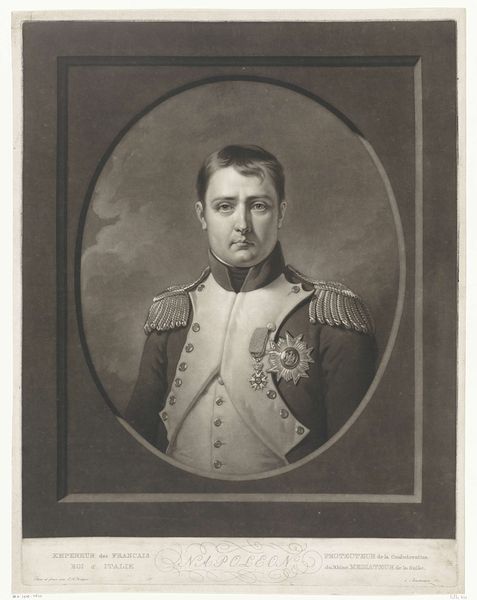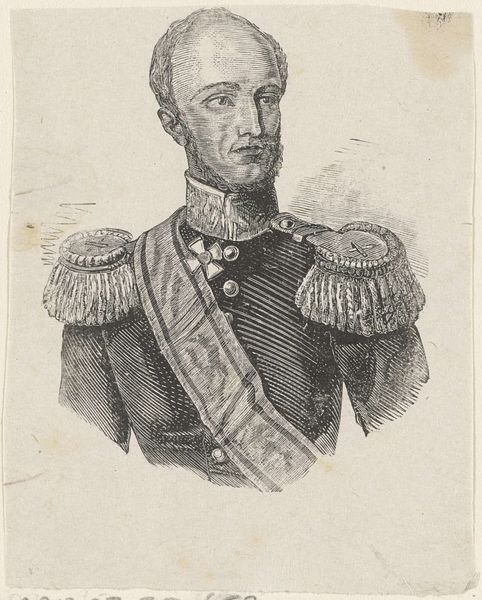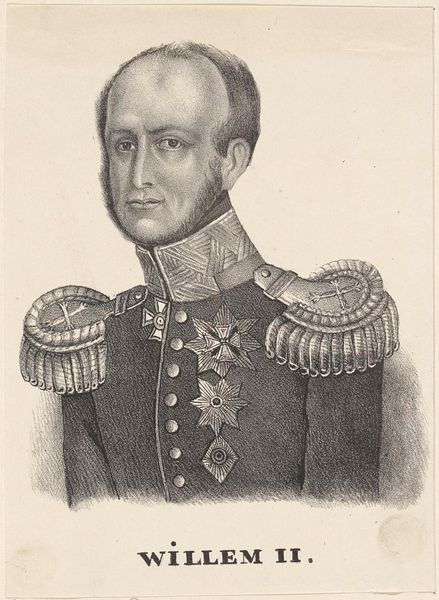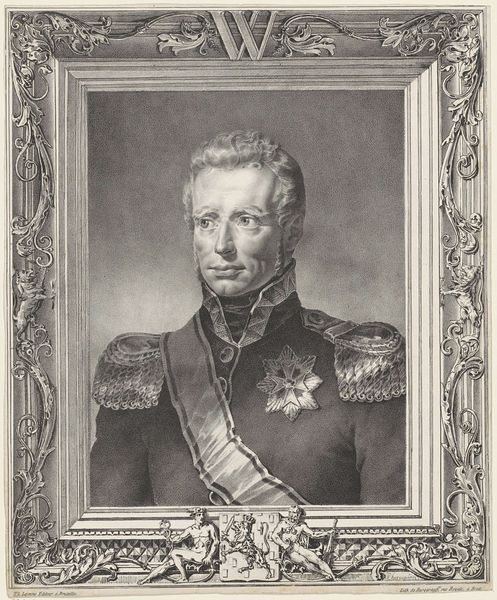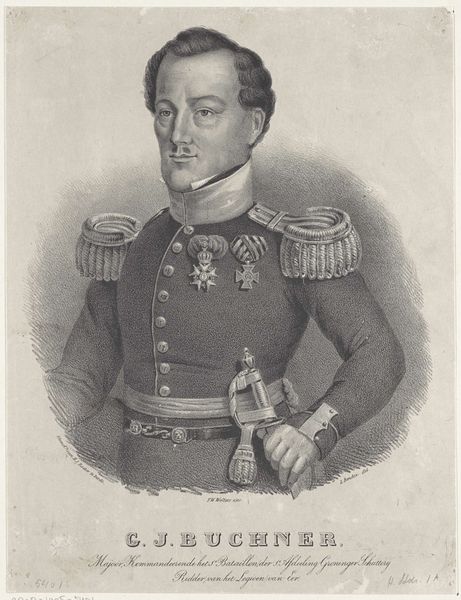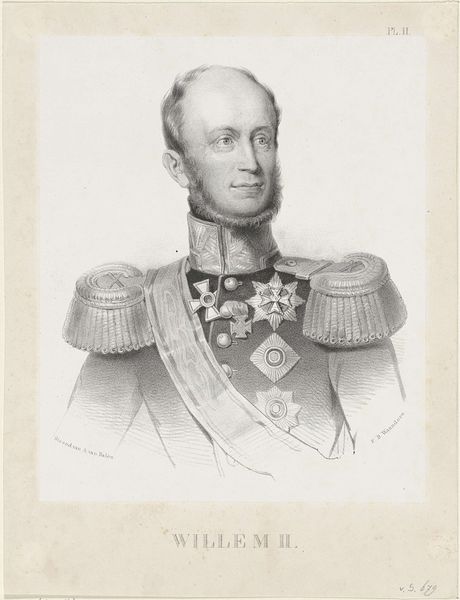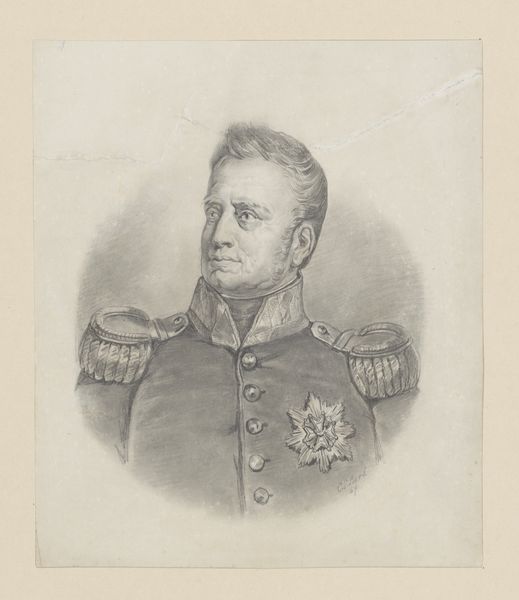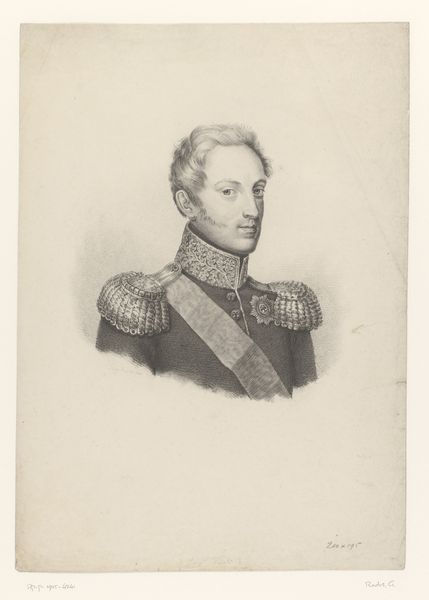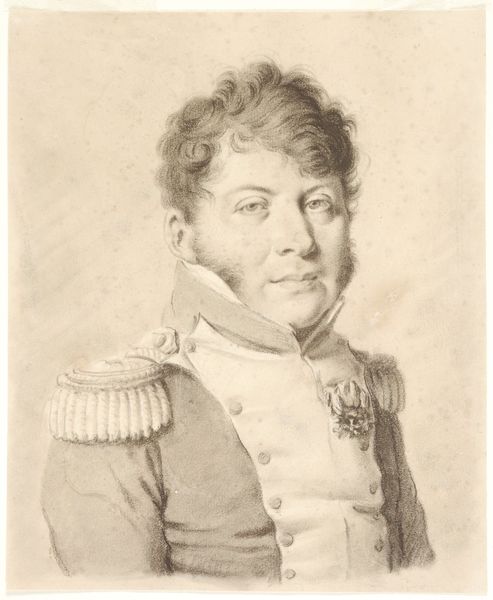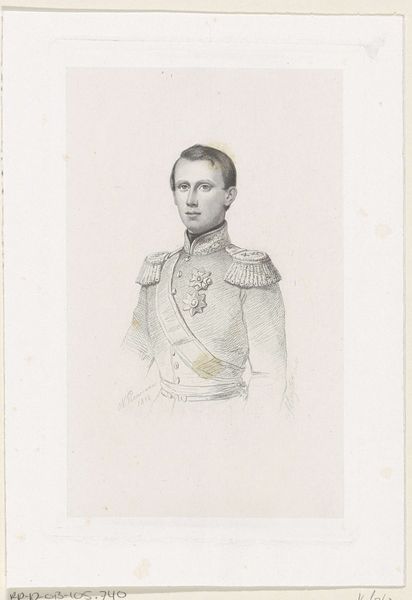
print, engraving
#
portrait
#
neoclacissism
# print
#
history-painting
#
engraving
Dimensions: Framed: L. 24 x W. 30 inches (61.0 x 76.2 cm)
Copyright: Public Domain
Curator: Take a look at "Napoleon Le Grand," an engraving dating from 1805 to 1815, created after Jacques Louis David's initial portrait. Editor: My first impression is one of almost startling intimacy, despite its propagandistic intent. It’s rendered so delicately, but the gaze feels quite direct and self-aware. Curator: It's fascinating how David, the premier painter, used visual symbolism to project an image of Napoleon's imperial power while subtly suggesting a vulnerable humanity. Note the calculated placement of emblems—powerful symbols meant to evoke strength. Editor: Yes, those emblems—the awards and insignia of office—speak volumes about Napoleon’s carefully constructed persona, but looking closer, the textures and lines of the engraving feel like a subtle interrogation. The tight cross-hatching hints at societal pressures and inner conflicts that shaped Napoleon. Curator: Precisely. Every detail, down to the engraved textures, transmits controlled ambition. Considering that David had been a court painter for Louis XVI, and later became a propagandist for the Revolution and Napoleon, do you see that history and continuity through visual representation playing out here? Editor: Absolutely. David had seen the shifts in political power, so Napoleon uses the symbolic language to anchor himself into history but also establish himself as something radically new. The “Le Grand” in the title, like so many propagandistic nicknames, reinforces Napoleon’s sense of historic purpose. This engraving doesn't simply represent him; it situates him in a historical continuum. Curator: Indeed, visual continuity reinforces legitimacy. He embodies both classical heroism and revolutionary ambition. He becomes larger than life in the collective psyche. Editor: What strikes me is how even through a visual medium, these power dynamics emerge. The gaze is a symbol; the emblems are stories, and the artistic technique carries its weight in reinforcing social and political norms. Curator: It’s truly revealing how carefully planned and executed the piece is to serve its political and cultural purposes, to elevate one person to that level of ‘Grand’. Editor: Yes, in some ways, an analysis like this, by examining both the grand symbol and granular technique, offers ways of examining and dismantling the ongoing ways power operates today.
Comments
No comments
Be the first to comment and join the conversation on the ultimate creative platform.
